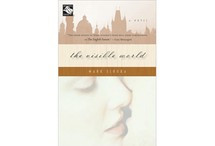The Visible World
By Mark Slouka
256 pages;
Houghton Mifflin
Mark Slouka calls the first third of his new novel, The Visible World (Houghton Mifflin), "a memoir," the second third "intermezzo," and the final third "a novel," making the layers and shadings of memory and truth not just the subject of the novel but also the somewhat vertiginous foundation on which it is built. In the first section, the unnamed narrator collects and catalogs dozens of fragmented scenes from a childhood burdened by his mother' deep unhappiness and haunted by unidentifiable ghosts. In the second section, he re-creates a trip he took to Prague, decades later, during which he uncovers still more fragments, which, when added to the others, allow him to invent the wartime love story that comprises the third section—the novel within a novel that helps him make sense of his own "real life."
Slouka' characters are well imagined, as is Prague, 1942. The story his narrator ultimately fashions is both credible and intensely romantic. But the real genius of The Visible World is the way it challenges the division between fiction and nonfiction, the way it asks us to consider how, given the capricious nature of both memory and language, the slow onset of grief and the enduring power of love, anyone can be expected to tell a story as it really happened. In this lush, luminous fiction, Slouka insinuates that no narrator is to be completely trusted, but that storytelling is our best chance at salvation—even so.
— Pam Houston


